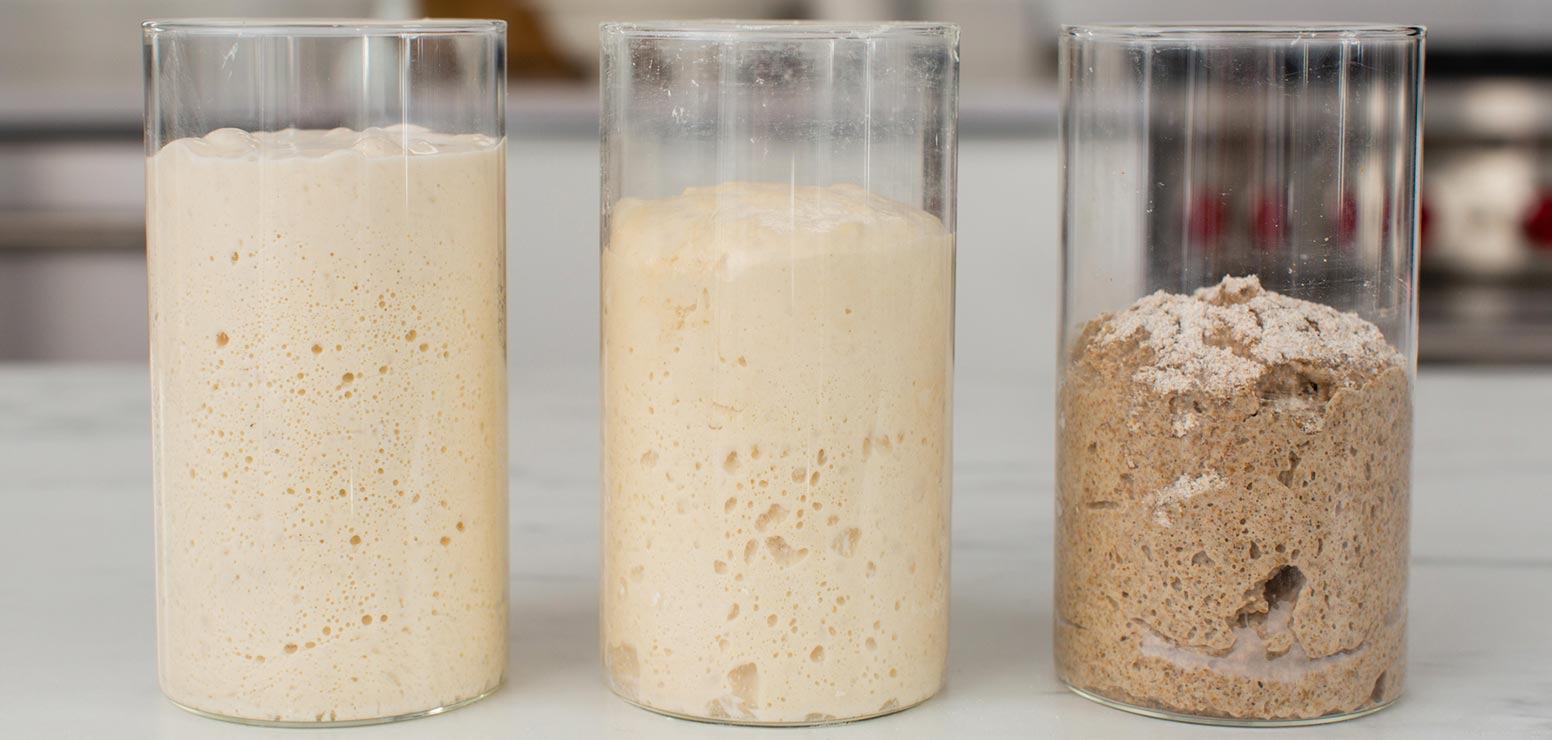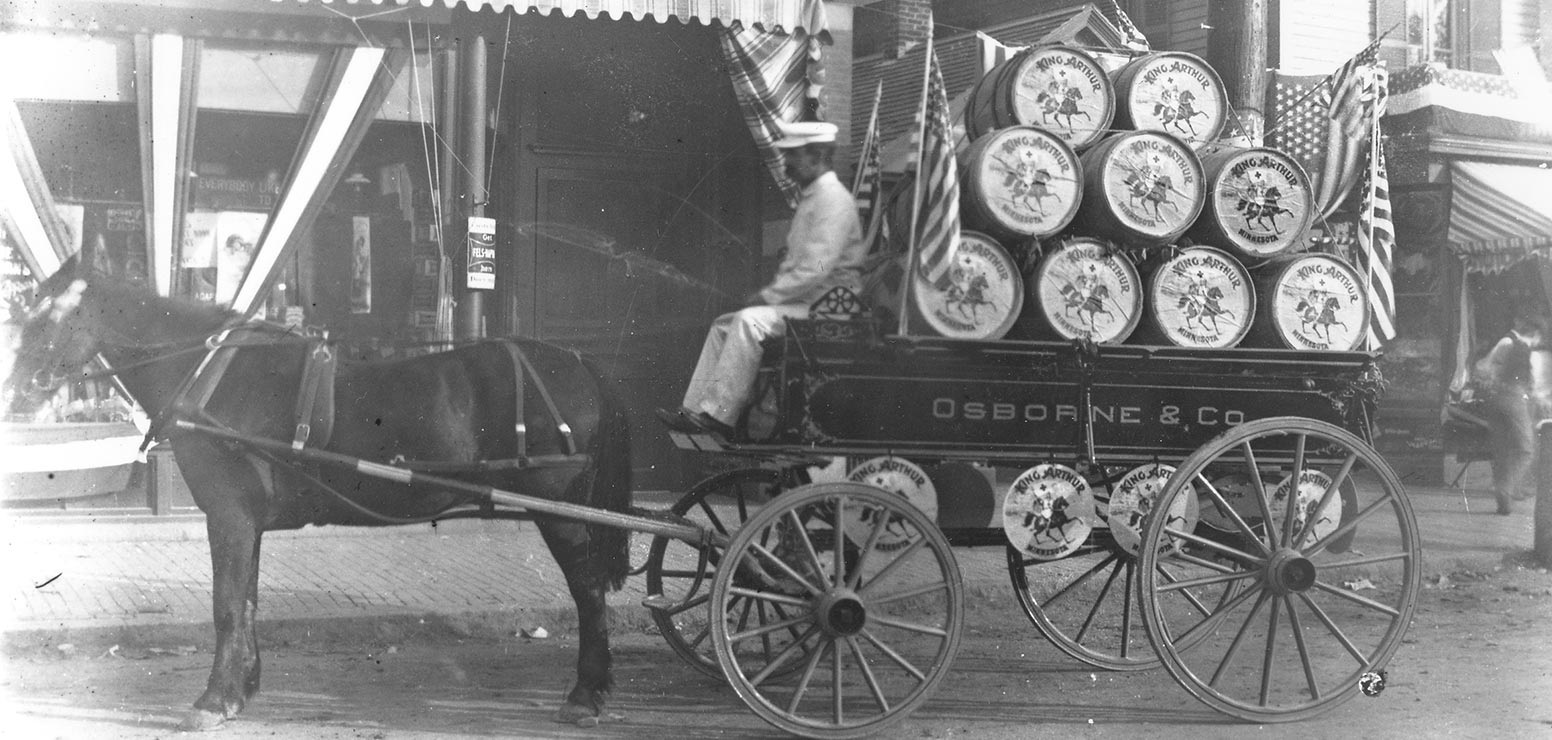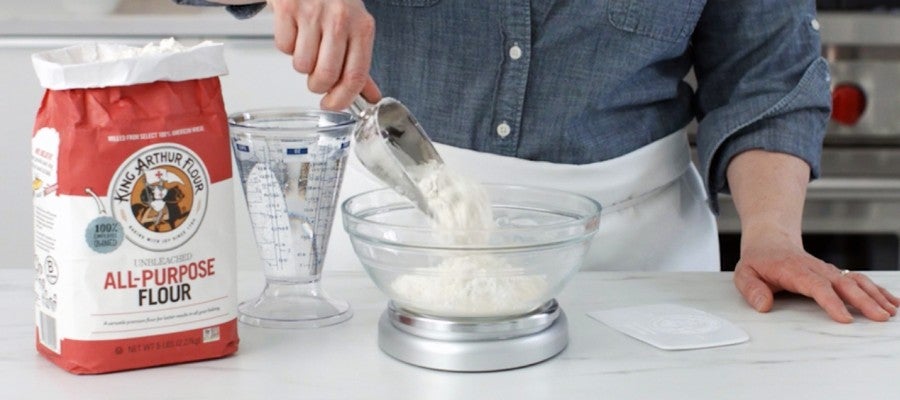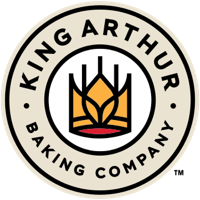This beginner’s sourdough guide walks you through the steps to make a basic loaf of bread. But if you’re ready to dive deeper into the wide world of sourdough, check out How to Bake Sourdough, a comprehensive resource with more tips, techniques, recipes, and FAQs, and more to help you become an expert sourdough baker and master many different loaves.
How does sourdough make things rise?
A packet of yeast makes dinner rolls rise. Sourdough starter performs that same function — but how? Wild yeast is in the air around us. It settles on kitchen work surfaces and in your ingredients, including flour. Add liquid to flour, and this wild yeast is activated and starts to produce carbon dioxide bubbles. This growing army of gas bubbles, effectively trapped by gluten within the dough, are what ultimately make sourdough bread rise.
Where does the sour flavor come from?
Sourdough bread's signature taste comes from friendly bacteria and yeast, which produce flavorful lactic and acetic acids in rising bread dough. These organic acids range from mellow to vinegary; controlling the balance of these acids, through adjusting ingredients and rising times in both starter and dough, lets you create bread with your own favorite flavor profile.
Right or wrong way?
There are scores of self-proclaimed sourdough experts out there, each willing to share with you the "secret" to sourdough. Problem is, these "secrets" are often completely contradictory. Sourdough is an area of enormous controversy, as well as firmly held ignorance.
"Scientific" bakers hold that sourdough bread can't be made without a thorough understanding of the symbiotic chemical relationship between yeast and lactobacilli. At the same time, people made bread with wild yeast for millennia — so how complicated could it be?

We know that yeast and lactobacilli leaven and flavor sourdough bread. We also know that temperature and hydration (the liquid/flour ratio) are important. But bakers' intuition is as essential to sourdough success as pure science. We see the same flour/water combination behaving differently from one time of year to another (or even from day to day); and it's as much experience as science that teaches us what's going on, and how to adapt.
So look at everything you read about sourdough as simply one approach. There are as many ways to create, nurture, and bake with a starter as there are bakers in the world. The information you read here works well for us, and we've shared our expertise with hundreds of thousands of satisfied bakers. But the "right" way to bake with sourdough is whatever works best for YOU.
Traditions & history
Grape juice, wine, beer, and wheat flour porridge (left to go sour) were leavening regulars in the ancient world. As early as 4,000 BC, Egyptian writings mention making bread with these "sours." Legend has it that a crock of starter made its way to the New World in the hold of Columbus' ship; and by the mid-19th century, starters were vital to both American prospectors and pioneers.

By 1849 sourdough had gained fame nationwide, driven by its popularity with California gold prospectors. Alaskan Klondike miners used fermented dough, hung in a tin above the stove, to make bread, biscuits, and flapjacks. A more liquid starter, called "sponge," was carefully tended by many a pioneer family as they traveled west in their prairie schooners.
Starters fed many families well, and were passed from friend to friend and generation to generation. Long after the advent of packaged yeast, sourdough baking has continued to thrive. Sourdough, with its unique flavor, has gathered a legion of aficionados — bakers who revel in the mystique of the starter, and who continue to feed family and friends with this ancient ingredient every day.

Next: Create
Every sourdough baker’s goal is a delicious loaf of crusty bread. First step: building your starter.
Start here
